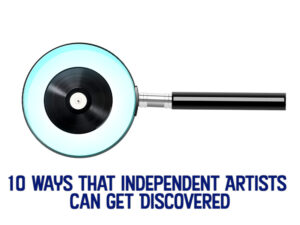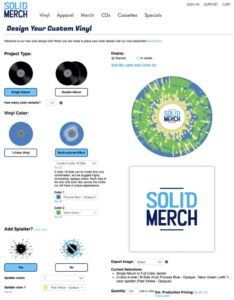Choosing the Right Vinyl Pressing Supplier
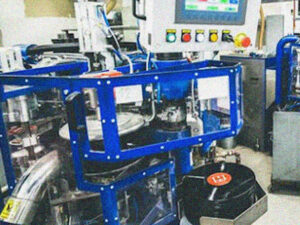
There are many companies offering vinyl manufacturing services, but it’s important to find the one that best meets your needs. When selecting a vinyl pressing supplier, here are some key factors to consider:
1. Quality Matters
The best vinyl pressing suppliers deliver high-quality records with clean audio, free of pops, skips, or warping. Check customer reviews, request sample pressings, and ask about quality control measures. Some suppliers inspect every record, while others only conduct spot checks.
2. Order Size and Minimums
Different suppliers accommodate different order sizes. Some specialize in short runs (100–300 units), while others focus on large-scale production. Choose a supplier that matches your quantity needs without sacrificing quality or affordability. For more information on what to know for your project, see our blog on Vinyl Pressing for Bands and Labels and the Vinyl Manufacturing Process.
3. Customer Service and Communication
A reliable vinyl pressing service keeps you informed at every stage. Look for a supplier known for quick response times, clear guidance, and support throughout the pressing process. Reading customer reviews can help gauge their service quality. If possible, you may want to reach out to a customer care team ahead of time with any questions you may have. That helps to clarify any concerns you might have, and gauge what the working relationship will be like.
4. Turnaround Time and Deadlines
Vinyl pressing can take many weeks to many months, depending on demand and production capacity. If you have a specific release date, confirm turnaround times upfront. A good supplier will communicate potential delays and offer realistic timelines and options to meet your deadlines as well as your budget.
5. Cost and Budgeting
Pricing varies based on order size, vinyl type, and customization. Get detailed quotes from multiple suppliers and compare value—not just cost. Watch for hidden fees like setup costs, design services, or expedited shipping charges.
6. Customization Options
Unique records attract attention. Some suppliers offer colored vinyl, splatter effects, picture discs, and special packaging like gatefold sleeves or foil stamping. If customization is important to you, choose a supplier with diverse options. Look for an in-writing, all-in quote which includes setups, product costs, overage possibilities and shipping.
7. Sustainability Practices
Eco-conscious vinyl pressing services use recycled materials, biodegradable packaging, and energy-efficient production methods. If sustainability aligns with your brand values, ask about their environmental practices. You can make additional choices to reduce the eco footprint, including vinyl weight, packaging types and transit methods.
8. Reputation and Experience
Industry experience matters. Established suppliers with a strong track record are more likely to provide consistent quality. Check testimonials, online reviews, and recommendations from other musicians or labels.
9. Additional Services
Some suppliers offer extras like vinyl mastering, packaging assembly, or sleeve design. If you want an all-in-one solution, look for a supplier that provides these services without compromising quality. Also, you may be looking to do your vinyl pressing combined with other products or in a box set; certain vinyl suppliers have a more comprehensive offering to meet these needs.
10. Transparency and Collaboration
A good vinyl pressing supplier is upfront about pricing, timelines, and potential challenges. They work with you to ensure your final product matches your vision, offering guidance on mastering, artwork, and packaging.
Conclusion
Choosing the right vinyl pressing service requires balancing quality, cost, customization, and turnaround time. By researching suppliers, comparing options, and prioritizing communication, you can ensure a smooth pressing experience. The right supplier isn’t just a manufacturer—they’re a partner in bringing your music to life. Solid Merch is a great source to get custom vinyl at great prices, with a wide array of vinyl color and packaging options, and highly rated customer care and we look forward to hearing from you!
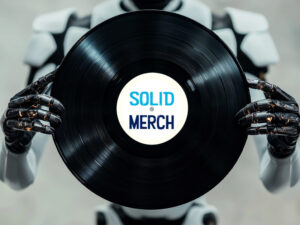
Is AI the Enemy of the Music Industry?
The rise of artificial intelligence in music has sparked heated debate among artists, songwriters, and producers. Many fear that AI-driven tools designed to generate lyrics, compositions, and even album artwork threaten the creative integrity of independent musicians. After all, if an algorithm can churn out a song in seconds, what happens to the artists who spend years perfecting their craft?
It’s a valid concern. But before we declare AI as the enemy, let’s take a step back and consider whether it’s truly a threat—or if there’s a way to harness it without sacrificing artistic integrity.
The Fear of AI in Music
The Loss of Authenticity
Music is deeply personal. It comes from lived experiences—heartbreak, joy, struggle, and triumph. Can an algorithm replicate that? Many artists argue no. AI-generated music might mimic patterns, but it lacks the raw, unfiltered emotion that makes a song truly connect. If AI-created music floods the market, it could dilute the value of genuine human expression, making it harder for independent artists to stand out.
AI models learn by analyzing vast amounts of existing music, identifying trends, and predicting what sounds “good.” But music isn’t just about what sounds good—it’s about what feels real. The greatest songs often break the rules, defy expectations, and resonate in ways that AI simply can’t predict. That unpredictability, that spark of human creativity, is what separates timeless artistry from formulaic imitation.
The Undercutting of Musicians & Creators
One of the biggest fears is that AI will become a cost-cutting shortcut. Instead of hiring songwriters, producers, or designers, labels (or even independent musicians) might turn to AI to generate content. This shift could take opportunities away from skilled creatives who rely on their craft to make a living.
In an industry where streaming payouts are already razor-thin, many musicians depend on services like custom songwriting, session work, and graphic design to sustain their careers. If AI-generated music and visuals become the default, it could push independent creators further to the margins, making it even more difficult to make a living from their art.
The Temptation of Over-Reliance
For emerging artists, AI could become a crutch. Why spend years mastering an instrument or refining lyrical ability if AI can do it for you? The worry is that rather than being an enhancement, AI could stunt the development of unique artistic voices, leading to an oversaturated industry of formulaic, AI-assisted music.
While technology has always shaped music—from drum machines to autotune—there’s a difference between using tools creatively and letting them take over the creative process. The ease of AI-generated content might make it tempting for artists to bypass the hard work of skill development, leading to a musical landscape that feels increasingly homogenized.
Can AI Be a Tool, Not a Replacement?
Despite these concerns, AI isn’t inherently bad. Like any tool, its impact depends on how it’s used. Rather than replacing musicians, AI can be leveraged to support and enhance creativity.
Efficiency in Music Production
Mixing, mastering, and even sound design are time-consuming processes, especially for independent artists without access to high-end studios. AI-driven tools like LANDR and iZotope’s Ozone 11 streamline these processes, allowing musicians to focus on their art without being bogged down by technical hurdles.
For an indie artist who might not have the budget for a professional mix engineer, AI mastering services can provide a polished sound that brings their music closer to a radio-ready standard. Used wisely, these tools can democratize music production, making high-quality recordings accessible to more musicians.
Personalized Learning & Skill Development
For those looking to improve their musicianship, AI-powered apps like Yousician offer real-time feedback on technique, helping artists develop their craft faster. Instead of replacing musicians, these tools can help them grow.
AI-driven learning platforms can analyze a guitarist’s finger positioning or a singer’s pitch accuracy, providing instant feedback that would otherwise require a human instructor. This makes high-quality music education more accessible to aspiring artists who might not have the means to afford traditional lessons.
Data-Driven Promotion
AI can also play a significant role in promoting music. Platforms like Spotify for Artists and Apple Music for Artists use AI algorithms to analyze listener data and recommend music to potential fans. By understanding and leveraging these insights, musicians can reach a broader audience and tailor their marketing strategies to be more effective.
AI-driven analytics tools can help artists identify which songs perform best, which regions their music is gaining traction in, and even what times of day their fans are most active. With this data, independent musicians can make informed decisions about release strategies, touring locations, and social media engagement.
Audience Engagement
Engaging with fans is crucial for building a loyal following, and AI can facilitate this in innovative ways. Tools like Hootsuite and Buffer help manage social media presence, allowing musicians to schedule posts and analyze engagement metrics. Additionally, AI-driven chatbots can interact with fans, providing personalized responses and enhancing the overall fan experience.
While nothing replaces genuine artist-fan interactions, AI can help musicians stay consistent with their engagement without spending hours glued to their screens. Chatbots and automated responses can handle common inquiries, freeing up more time for artists to focus on their music while still maintaining a connection with their audience.
The Key: Keeping the Human Element
The line between using AI as a tool versus letting it take over comes down to intent. If an artist uses AI to cut corners, it’s fair to question the artistic value of the work. But if AI is used to enhance creativity, improve production efficiency, or connect with audiences in new ways, it can be an asset rather than a threat.
At its core, music is a human experience. No algorithm can replicate the imperfections, emotions, and soul that make music so powerful. The challenge isn’t stopping AI—it’s ensuring that it serves artists rather than replacing them.
While AI-generated music might be able to compose a catchy tune, it lacks the nuance of a performer infusing their personal experiences into a song. An AI might be able to write lyrics that rhyme, but it won’t know the ache of a breakup, the thrill of falling in love, or the struggle of chasing a dream. These are things only human artists can bring to their work.
The best use of AI in music is one that respects the creative process rather than replacing it. Artists who embrace AI as a collaborator rather than a substitute will likely find ways to push their music forward while keeping their unique voice intact.
Conclusion: AI is Not the Enemy—If We Use It Right
AI’s role in the music industry is still evolving, and there are real concerns about its impact. But rejecting AI outright might not be the answer. Instead, independent musicians and creators should focus on how to use AI responsibly—leveraging it as a tool while keeping the heart of their craft intact.
AI doesn’t have to be the enemy of music. But it’s up to artists to make sure it doesn’t become one. By using AI to enhance rather than replace creativity, musicians can continue to make meaningful, authentic music while benefiting from the efficiencies and insights AI provides.
Music has always evolved alongside technology. From the invention of the synthesizer to the rise of digital recording, new tools have reshaped the way music is made and consumed. AI is simply the next frontier. And just like those past innovations, it’s up to artists to decide how to integrate it into their work without losing what makes music special in the first place.
10 Ways That Independent Artists Can Get Discovered
The journey to getting discovered as an independent artist is equal parts creativity, strategy, and perseverance. There’s no magic formula, but with the right approach, you can boost your visibility and connect with a wider audience. Let’s dive into how you can make it happen:
1. Build Your Online Presence
Your online presence is your digital stage—it’s where the world discovers your talent.
- Social Media: Platforms like Instagram and TikTok are your best friends. Share snippets of your music, behind-the-scenes moments, and even your creative process. TikTok is especially powerful for going viral, so don’t shy away from hopping on trends or sharing something uniquely you.
- Your Website: A professional website is your home base. Include your music, bio, tour dates, and links to social media. Bonus points if it’s mobile-friendly—most fans will find you on their phones.
- Streaming Platforms: Upload your music to Spotify, Apple Music, and SoundCloud. Take advantage of tools like Spotify for Artists to track your performance and connect with fans. A polished profile with great photos and a killer bio goes a long way.
2. Network and Collaborate
You don’t have to go it alone. Collaboration is a powerful tool for growth.
- In Person: Hit up local gigs, open mics, and festivals to meet other artists and industry professionals. Live performances are not just about music—they’re about building connections and fans.
- Online Communities: Engage with forums, Facebook groups, and Reddit threads. Share your work, get feedback, and keep your ear to the ground for opportunities.
3. Use Music Discovery Platforms
These platforms are goldmines for independent artists.
- Bandcamp: Perfect for selling your music and merch while connecting with passionate fans.
- SoundCloud: Share your tracks, interact with other artists, and use the repost feature to reach new listeners.
- Distributors: Services like DistroKid or TuneCore make it easy to get your music on major streaming platforms and provide helpful analytics to guide your strategy.
4. Create Content That Stands Out
Content marketing isn’t just for brands—it’s for artists too.
- YouTube: Share music videos, behind-the-scenes clips, and even vlogs to show off your personality.
- Blogging: Share your story, tips for other artists, or insights into your genre. This builds your credibility and can introduce you to new fans.
- Email Newsletters: Keep your fans in the loop with updates about releases, shows, and exclusive content.
5. Compete and Perform
Nothing beats the thrill (and exposure) of putting yourself out there.
- Competitions: Songwriting contests and battle-of-the-bands events can put you on the map.
- Festivals: Apply to perform at festivals to reach bigger audiences and make industry connections.
- Open Mics: Performing at your local open mic can introduce you to new musicians and connections while giving you a chance to practice your performance.
6. Partner with Influencers and Media
Leverage the power of others’ platforms to amplify your reach.
- Influencers: Collaborate with social media influencers who align with your genre. Their audience could become your next fans.
- Press: Pitch your story to local papers, music blogs, and magazines. Even a small feature can lead to big opportunities.
7. Establish Your Brand
Your art is the heart of your brand, but visuals and consistency make it memorable.
- Branding: Develop a logo, color palette, and visual style that scream you. That will make your merch even more recognizable!
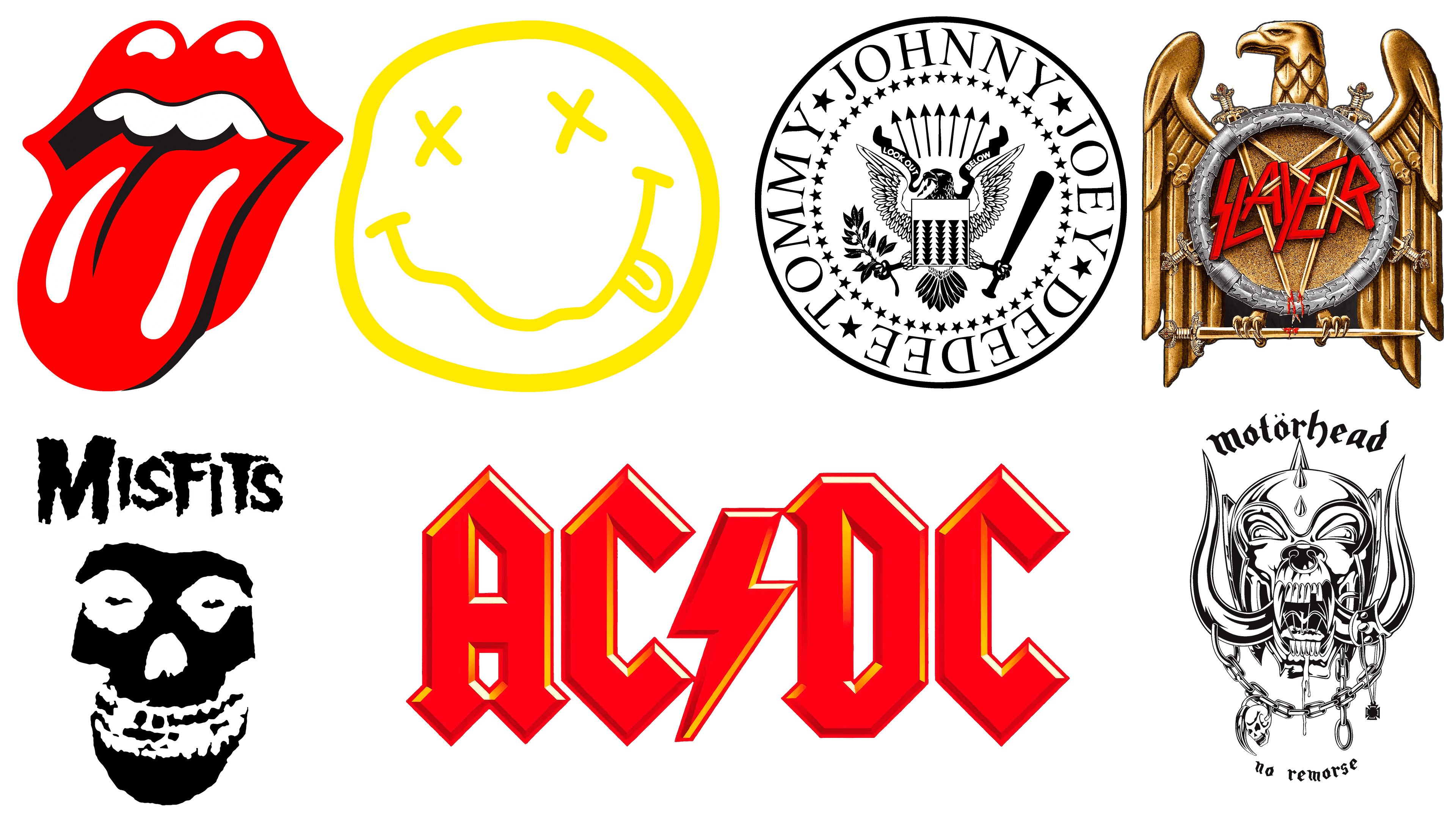
- Promotion: Use targeted ads on social media to find potential fans. Small investments here can lead to big results.
8. Engage with Your Fans
Your fans are your biggest asset—treat them likeVIPs.
- Live Performances: Whether in-person or online, live shows create unforgettable connections. Platforms like Twitch make global performances possible from your own home.
![]()
- Personal Interaction: Respond to comments and messages. Fans love feeling seen and appreciated.
- Create and Sell Merch: Having merch is a great way to keep your fans engaged, while having them represent your art. Apparel, Vinyl, CDs, and Cassettes are all great items for your fans to collect. Consider doing limited editions and variants as well for extra collector points!
9. Embrace Data and Feedback
Analytics might not sound exciting, but they’re your secret weapon.
- Track Metrics: Pay attention to what’s working on streaming platforms and social media.
- Adapt: Use data to refine your content and marketing strategies.
10. Keep Learning and Evolving
The music industry is always changing, and so should you.
- Stay Curious: Read, watch, and listen to everything you can about the industry.
- Experiment: Be bold and try new things—it’s often where the magic happens.
Remember, getting discovered is a marathon, not a sprint. Stay persistent, stay authentic, and keep engaging with your audience. With the right mix of effort and creativity, you’ll be well on your way to sharing your music with the world.
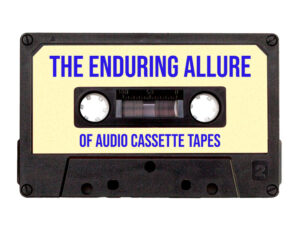
The Enduring Allure of Audio Cassette Tapes
In a world dominated by digital streaming and cutting-edge audio tech, you might think audio cassette tapes are relics best left in dusty attics. Yet, these unassuming little rectangles have staged a surprising comeback. But why? What keeps them spinning in an era where convenience reigns supreme? Let’s explore the mechanics of cassette tapes and uncover the reasons for their lasting charm.
How Audio Cassette Tapes Work
Behind their simple plastic shells, cassette tapes house some pretty ingenious technology. Here’s a breakdown of how they capture and replay sound:
Magnetic Tape Magic:
Inside each cassette, a long strip of magnetic tape—made from polyester and coated with iron oxide or similar magnetic material—winds between two reels. This tape is the canvas where music lives.
Recording Wizardry:
When recording audio, the tape slides past a recording head in the cassette player. This head creates a magnetic field that organizes the tape’s particles to match the sound waves being captured. Louder sounds or higher pitches result in stronger or more rapid changes in the magnetic alignment.
Playback Sorcery:
Playing back the music reverses the process. The tape passes over a playback head, which reads the magnetic patterns and converts them into electrical signals. These signals are then amplified and sent to your speakers or headphones, recreating the original sound.
Mechanical Teamwork:
A cassette player’s inner workings—capstans, pinch rollers, and motors—ensure the tape moves at a consistent speed, whether you’re recording your voice or reliving your favorite mixtape.
Despite the technological advancements of today, there’s a fascinating simplicity to how cassettes work. And maybe that simplicity is part of their appeal.
Why Cassettes Staged a Comeback
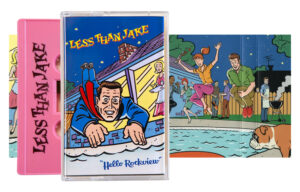
Sure, digital music offers pristine sound and endless convenience. But cassette tapes tap into something deeper, something emotional. Here’s why they’re still cherished:
A Nostalgia-Fueled Revival:
Cassette tapes hold memories. They’re the mixtapes you painstakingly curated for a crush, the albums you looped on your Walkman until the tape wore thin. For many, these tangible connections to the past outshine the sterile ease of streaming.
Perfectly Imperfect Sound:
Unlike the clinical precision of digital audio, cassettes deliver an analog warmth. There’s a certain magic in the slight hiss, the occasional wobble. These imperfections make the music feel more intimate—like it’s being performed just for you.
Collector’s Delight:
Physical media like cassettes are treasures in an increasingly intangible world. Limited editions, unique packaging, and rare finds make cassettes irresistible to collectors. Some artists even use cassettes as creative outlets for bespoke designs and limited-run releases.
DIY Dreamland:
For independent musicians, cassette tapes are a low-cost, high-impact way to share their work. Cassette duplication has become a staple in the DIY scene, with homemade mixtapes and custom recordings adding a deeply personal touch.
Retro Meets Modern:
Younger generations have embraced cassettes not just for their music but as artifacts of a pre-digital era. Their quirky, analog aesthetic resonates with anyone looking to unplug and rewind—literally.
Hands-On Interaction: Cassettes demand physical engagement. You don’t just press a button and forget—you load the tape, flip it over, rewind it. This tactile experience creates a connection to the music that’s hard to replicate in the swipe-and-scroll age.
Album Art Appreciation: Tiny but mighty, cassette tapes offer a space for album art, liner notes, and lyrics. There’s joy in reading along with the music, holding the artist’s vision in your hands as you listen.
Durability and Portability: Unlike their vinyl cousins, cassettes can handle a little rough-and-tumble. Compact and portable, they’re perfect for tossing in a bag or passing to a friend—physical music you can take anywhere.
Why It Matters
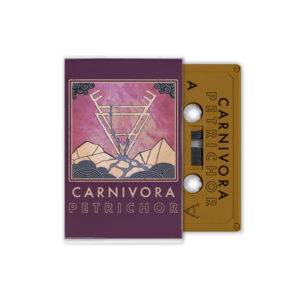 The resurgence of cassette tapes isn’t just about nostalgia or aesthetics. It’s a reminder of the human desire for connection and tangibility in a digital world. There’s something grounding about holding music in your hands, hearing the faint click as the tape starts to play, and knowing the exact moment when Side A ends and Side B begins.
The resurgence of cassette tapes isn’t just about nostalgia or aesthetics. It’s a reminder of the human desire for connection and tangibility in a digital world. There’s something grounding about holding music in your hands, hearing the faint click as the tape starts to play, and knowing the exact moment when Side A ends and Side B begins.
While streaming dominates the industry, cassettes offer an antidote—a slower, more intentional way to experience music. They’re not about convenience; they’re about the journey, the imperfections, and the memories that come with them.
Conclusion: A Love Letter to the Tape
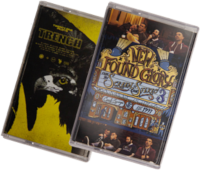
So next time you stumble upon a cassette tape, don’t just see it as outdated tech. Think of it as a time capsule, a love letter to the artistry of music and the simplicity of analog sound. Whether you’re rewinding an old favorite or popping in a brand-new release, you’re engaging with music in a way that’s both nostalgic and refreshingly human.
And if you’re an artist looking to bring this timeless format to your fans, Solid Merch offers cassette tape duplication services tailored to independent musicians. From audio cassette duplication to custom cassette duplication packages, we’ve got you covered. Click here to explore our options and make your music tangible, collectible, and unforgettable.
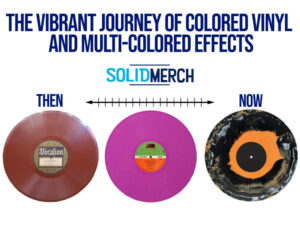
The Vibrant Journey of Colored Vinyl and Multi-Colored Effects
Vinyl records are more than just a way to listen to music—they’re an experience. With their rich sound and tactile charm, they’ve always held a special place in music lovers’ hearts. But vinyl’s magic doesn’t stop at sound; it’s also a visual feast. Colored vinyl and intricate multi-colored effects have turned records into stunning collectibles and vibrant works of art. Let’s spin through the colorful history and creative techniques that make these records so captivating.
Where It All Began
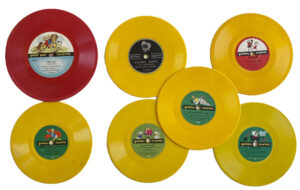
Colored vinyl traces its roots back to the early 20th century. While black vinyl dominated the scene, early experiments with color popped up for special releases or kids’ records. These were often simple solid shades like red, blue, or green—nothing flashy yet.
In the 1940s and 1950s, colored vinyl gained traction as a clever marketing tool. Labels like RCA Victor released their iconic 45 RPM records in various colors to help listeners easily identify genres. It wasn’t just practical—it was eye-catching, and it set the stage for a whole new way to experience vinyl.
The Psychedelic Splash
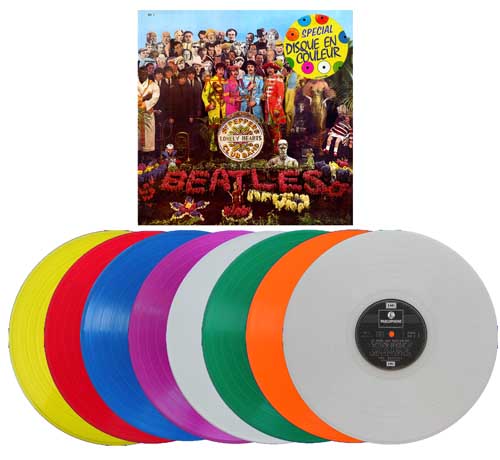
By the 1960s and 1970s, creativity in music was matched only by the explosion of color on vinyl. Psychedelic rock bands, counterculture movements, and bold visual art collided to push the boundaries of design.
Take The Beatles’ Sgt. Pepper’s Lonely Hearts Club Band, for example. Its special bright yellow pressing became an instant icon. Bands like Jefferson Airplane and Pink Floyd embraced it as part of their overall artistic expression. Records weren’t just tools for music—they became extensions of the art itself.
A Treasure Trove for Collectors
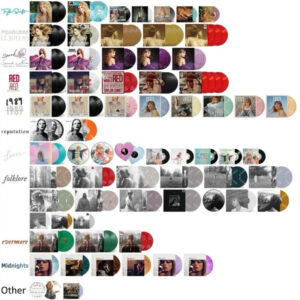
As vinyl cemented itself as a cultural staple, colored pressings became a hot commodity for collectors. By the 1980s and 1990s, limited editions in wild colors and patterns had fans lining up to grab rare finds.
This era also saw the rise of picture discs—vinyl records with full-color graphics embedded in the surface. While technically different from colored vinyl, these discs contributed to the movement of turning records into visual masterpieces.
Modern Marvels: Multi-Colored and Splatter Vinyl
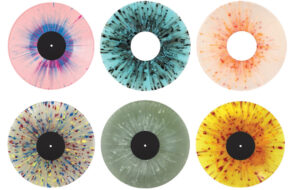
The modern vinyl revival has brought a wave of innovation, especially in how records are crafted. Today’s colored vinyl isn’t just bold—it’s dazzlingly intricate. Techniques like splatter, marbling, and split-color effects have made each record unique.
- Splatter Vinyl: Streams of color radiate from the center, thanks to a method of dripping hues into the pressing mold. No two splatter records are ever the same.
- Marbled Vinyl: Swirls of color blend together to create a dreamy, psychedelic effect reminiscent of the ’60s.
- Split and Quad-Color Vinyl: These records feature distinct sections of color or quadrant patterns, perfect for limited editions.
- Glow-in-the-Dark Vinyl: Phosphorescent materials give these records an ethereal glow, adding a whole new level of visual fun.
A Canvas for Creativity
Colored and multi-colored vinyl has become much more than a gimmick. It’s an art form, blending music and design into a cohesive masterpiece. For musicians and labels, these vibrant discs are a way to enhance the album experience, creating a product fans want to own and display.
Vinyl also bridges the gap between visual and auditory art, allowing for a richer, multi-sensory connection to music. Each colorful pressing tells a story, enhancing the artistry of the album itself.
Looking Ahead
The history of colored vinyl is proof of the enduring magic of physical music. From humble beginnings as a marketing tool to its current status as collectible art, colored vinyl continues to evolve, reflecting the creativity of the music world.
With vinyl’s resurgence, the future promises even more dazzling designs and groundbreaking techniques. Whether you’re an avid collector or new to the vinyl scene, colored records offer an unparalleled way to experience music—both sonically and visually.
These aren’t just records; they’re vibrant pieces of history, culture, and art, spinning timelessly on turntables across the globe.
Solid Merch has made it easier than ever to make the physical representation of your art a piece of art in itself. With our new Vinyl Design Tool (pictured above) you can play with vinyl colors, effects, splatter, and create mockups with your artwork instantly!
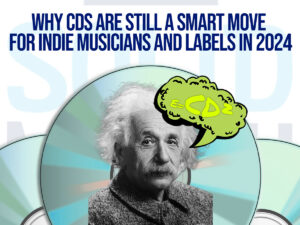
Why CDs Are Still a Smart Move for Indie Musicians and Labels in 2024
In a world where streaming dominates, many might think that physical media like CDs are outdated. But for independent musicians and record labels, CDs are far from obsolete—they’re a valuable asset with tangible and financial benefits. As a reliable, affordable format that offers lasting appeal, CDs bring more than music to the table. They’re collectibles, essential promotional tools, and a timeless way to showcase artistry. Here’s why CD Duplication, CD Replication, and CD Packaging are still worthwhile investments for indie artists.
CDs as a Collectible Format
In the age of instant digital music, there’s something unique about holding a physical album in your hands. CDs offer fans a tangible piece of the artist’s work—something they can display, keep, and cherish. Collectibility is on the rise, with music lovers seeking out physical media for its personal connection. CD Packaging options allow indie musicians to create distinctive, memorable experiences for fans, transforming a standard jewel case or digipak into a keepsake.
From limited-edition releases to unique album art and personalized liner notes, CDs can become treasured items for fans. For indie musicians, releasing CDs doesn’t just mean sharing their music—it’s a chance to give fans a collectible piece of their artistic journey. With CD Duplication and CD Replication services, artists can produce small or large batches, making it easier to release special editions without overspending.
Affordability and Accessibility of CDs for Indie Artists
Compared to vinyl and other physical formats, CDs are incredibly affordable to produce, making them ideal for indie musicians working within a budget. With flexible CD Duplication options, artists can order smaller quantities without breaking the bank. CD Replication, suited for larger runs, is also cost-effective, helping artists meet demand without sacrificing quality.
Not only is CD production budget-friendly, but it’s also faster than other formats. While vinyl production can sometimes take months, CDs can often be produced and delivered within weeks. This speed is essential for indie artists looking to capitalize on album releases or tour launches without delay. CDs remain one of the quickest, most efficient ways for indie artists to get their music to fans.
Revenue Stream and Merch Table Staples
CDs are a staple at merch tables and online stores for a reason—they sell. For fans at shows, picking up a CD is a direct way to support the artist and take a piece of the experience home. With well-designed CD Packaging, a CD becomes more than music; it’s a memento of a live performance, a collectible, and an immediate source of revenue.
CDs offer flexibility for packaging, too. From simple cardboard sleeves to deluxe cases, indie artists have options to match their brand aesthetic and give fans value at various price points. Fans still appreciate CDs as a convenient format, whether for car rides, home collections, or personal keepsakes. By making CDs available, artists can tap into an additional revenue stream that not only supports them financially but also strengthens fan connections.
Professional Appeal: The Value of a Finished, Packaged Product
There’s no denying that a well-packaged CD lends professionalism to an indie artist’s work. Having a polished, physical album signals that the artist takes their music seriously and cares about presentation. CD Packaging offers a variety of ways to elevate an album’s look, from high-quality jewel cases to eco-friendly cardboard packaging. These options let indie artists present their music as a complete, professional package—one that stands out and feels worth the purchase.
Professionally packaged CDs can be excellent for sending to press outlets, radio stations, or industry contacts. Unlike digital files, a physical CD package gives journalists and industry professionals a tactile, memorable way to experience the artist’s brand, creating a stronger impact.
CDs for Promotional Use
When it comes to promoting new music, CDs are still an effective tool. For many indie artists, physical media serves as a valuable promotional item that’s hard to ignore. Digital fatigue is real, and offering a physical CD can cut through the noise of countless digital downloads. For industry contacts, from reviewers to venue promoters, receiving a well-packaged CD in a promo kit can make an artist’s work feel more substantial and memorable.
Moreover, CDs can work as affordable press giveaways or fan prizes, especially during album launches or radio show promotions. As a physical promo item, CDs help indie artists create a lasting impression, leveraging CD Duplication and CD Packaging options to tailor the look to their brand.
Conclusion
In the fast-paced digital era, CDs offer independent musicians and labels a unique way to connect with their audience and elevate their brand. From collectibles to professional tools, CDs provide a flexible, budget-friendly format that’s far from dead. By leveraging CD Duplication, CD Replication, and CD Packaging services, indie artists can still enjoy the benefits of physical media—whether they’re looking to increase revenue, create keepsakes for fans, or build promotional appeal.
For independent musicians, adding CDs to the release strategy isn’t just about nostalgia—it’s a smart move that aligns with practical, affordable, and fan-friendly goals. Consider how CDs could fit into your music journey, offering more than music—a memorable, valuable experience that digital files simply can’t provide.
